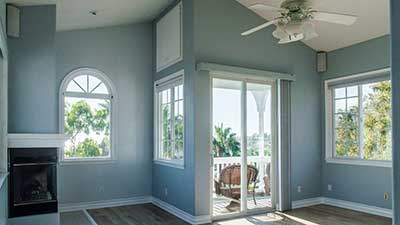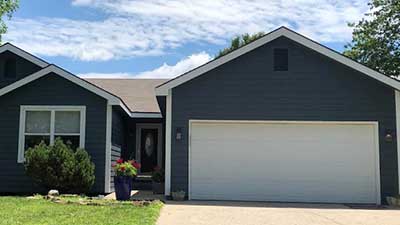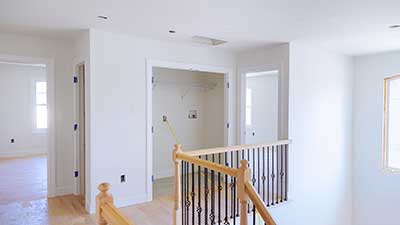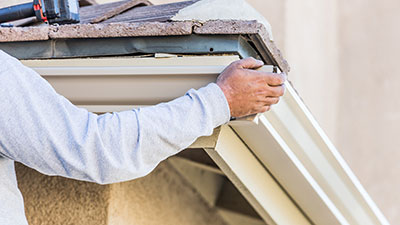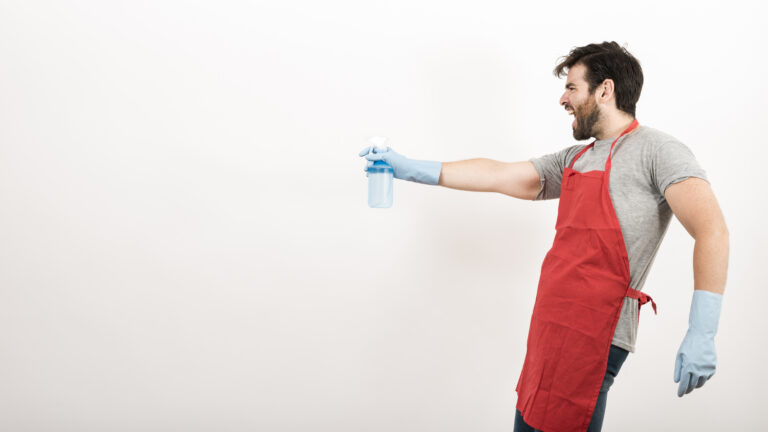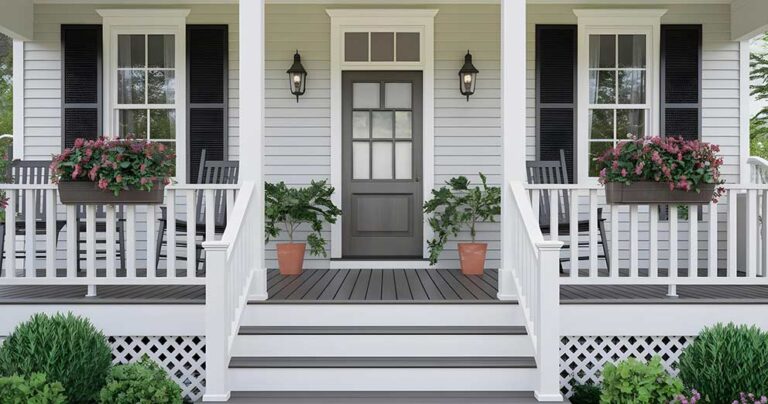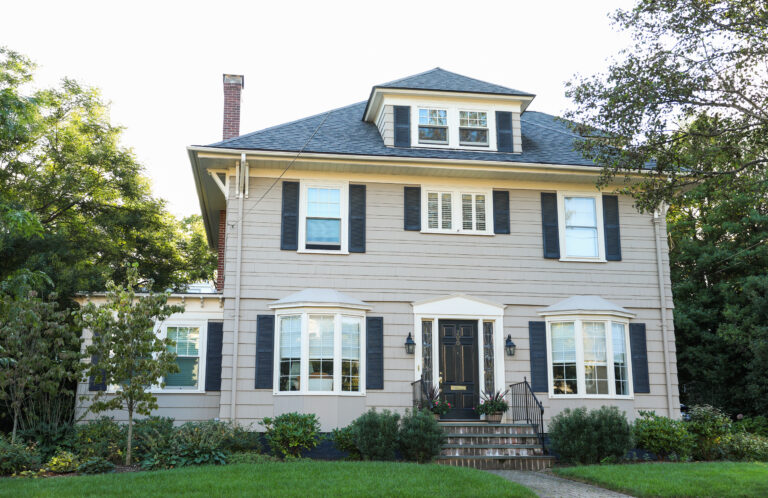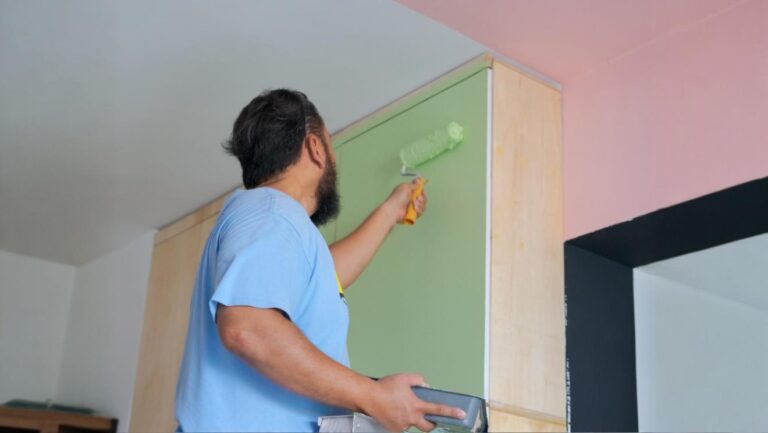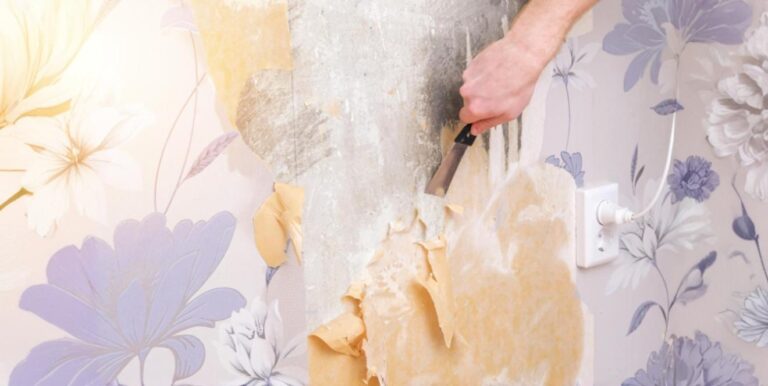Recognizing painting problems before they escalate is important for several reasons. First, it allows for timely interventions that can prevent minor issues from becoming major headaches. Common paint problems like blistering, peeling paint, and cracking paint can often be fixed easily if identified early.
Understanding these issues also helps in choosing the right materials and techniques from the start. For example, knowing that damp surfaces can cause peeling paint might prompt you to ensure your walls are completely dry before applying paint. Similarly, using high-quality primers and top quality paints can mitigate many common paint problems.
Surface Preparation Issues When Painting
Proper surface preparation is required for a successful paint job. Neglecting it can lead to various problems that affect both the aesthetics and durability of the painted surface. Three common issues related to surface preparation are blistering and flaking, bleeding and staining, and filler showing through paint.
Blistering and Flaking
Blistering and flaking paint often result from moisture trapped beneath the paint film, poor adhesion, or inadequate surface preparation. When moisture is present on the surface, it can cause the paint to lift and form blisters.
Applying paint to a dirty or oily surface can prevent it from adhering properly, leading to flaking.
To prevent blistering and flaking, ensure the surface is thoroughly cleaned before applying paint. This includes removing dirt, grease, and old paint. Using a high-quality primer can improve adhesion and provide a stable base for the topcoat. Controlling moisture levels is also critical; ensure surfaces are completely dry before painting and address any underlying moisture issues.
Bleeding and Staining
Bleeding and staining occur when contaminants, such as old stains or previous coatings, seep through the new paint. This is especially common when covering dark colors with lighter shades or when the underlying surface has been contaminated by substances like smoke or water stains.
Using a stain-blocking primer is the best way to prevent bleeding and staining. These primers create a barrier that prevents contaminants from seeping through the new paint. Properly cleaning the surface before painting is also essential to remove any residual stains or contaminants.
Filler Showing Through Paint
Filler showing through paint is often due to poor application techniques or insufficient drying time. If the filler is not sanded smoothly or given enough time to dry, it can become visible through the topcoat, resulting in an uneven finish.
To ensure a smooth finish, sand the filled areas until they are level with the surrounding surface. Using high-quality fillers can also help achieve better results. After sanding, apply a primer to the filled areas to prevent the topcoat from being absorbed unevenly. This step ensures that the final coat of paint covers the surface uniformly.
Application Technique Issues When Painting
Proper application techniques help achieve a smooth and durable paint job. Incorrect application can lead to various issues that affect the overall quality and appearance of the surface.
Three common application problems are cissing, foaming, and mud cracking. Understanding the causes and solutions for these issues can help ensure a successful painting project.
Cissing
Cissing occurs when paint does not adhere properly, leaving small unpainted areas due to contaminants like wax, oil, or polish. Incompatible paint systems can also cause this issue. To prevent cissing, clean the surface thoroughly with detergent and abrasive paper, rinse and dry completely, and use compatible paint systems.
Foaming
Foaming happens when bubbles form in the paint, leaving craters after bursting. This is often due to over-rolling or shaking the paint vigorously. Prevent foaming by gently stirring the paint, using the correct roller, and applying paint smoothly without overworking it.
Mud Cracking
Mud cracking appears as deep, irregular cracks, often caused by applying paint too thickly or applying multiple coats too quickly. Prevent this by applying thin coats, allowing proper drying time between coats, and using high-quality paint to avoid cracks.
Common Painting Problems Caused by Environmental and External Factors
Environmental and external factors have a direct influence on the success and longevity of a paint job. Being aware of these factors and how they affect painted surfaces can help you prevent common paint problems. This section covers issues such as powdery or chalky surfaces on outside paint work, mold growth, cracking plaster, and rain spotting, along with their causes and solutions.
Powdery or Chalky Surfaces on Outside Paint Work
Powdery or chalky surfaces often result from prolonged exposure to UV rays and weather conditions. UV degradation breaks down the paint film, causing it to become powdery. Similarly, constant exposure to harsh weather can erode the paint, leaving a chalky residue.
To combat this, use UV-resistant paints specifically designed for exterior use. These paints have additives that protect against UV damage and weathering. Regular maintenance, such as washing the exterior surfaces and repainting when necessary, also helps maintain the integrity of the paint.
Mold Growth
Mold growth on painted surfaces is typically due to high humidity and poor ventilation. Areas like bathrooms, kitchens, and basements, which are prone to moisture, are especially vulnerable.
Using mold-resistant paint can significantly reduce the likelihood of mold growth. Improving ventilation in these areas by installing exhaust fans or using dehumidifiers can help control moisture levels. Regular cleaning with fungicidal solutions can also keep mold at bay.
Cracking Plaster
Cracking plaster is often caused by structural movement within the building or the use of poor-quality plaster. As the structure settles or shifts, the rigid plaster can crack, leading to an uneven surface.
To address cracking plaster, first repair the damaged areas by cutting out the cracks and filling them with a high-quality filler. Sand the filled areas smooth and apply a flexible paint that can accommodate slight movements without cracking. Using higher quality plaster during initial construction can also prevent future issues.
Rain Spotting
Rain spotting occurs when rain impacts the painted surface before the paint has fully cured. This can leave unsightly blemishes and affect the overall finish.
Prevent rain spotting by carefully planning your painting projects around the weather forecast. Ensure that there is adequate drying time between coats and before any expected rain. If rain is unavoidable, consider using quick-drying paints or protective coverings to shield the painted surfaces.
Other Common Painting Problems
In addition to problems caused by environmental factors and paint aging, there are several other common issues that can affect the quality and longevity of your paint job.
Poor Quality Paint
Using poor quality paint can lead to numerous issues such as uneven coverage, fading, and reduced durability. Investing in high-quality paint ensures better adherence, a smoother finish, and longer-lasting results. Always choose paint that is appropriate for the specific surface and environmental conditions.
Alligatoring
Alligatoring is characterized by a pattern of cracks that resemble alligator skin. This issue often occurs when a topcoat is applied before the undercoat has fully dried. The lack of proper drying time causes the topcoat to crack as the undercoat continues to dry and contract.
To prevent alligatoring, ensure that each coat of paint is completely dry before applying the next one. Follow the manufacturer’s recommended drying times and use compatible products. Applying a high-quality primer and allowing adequate drying time can help achieve a smooth, crack-free finish.
Efflorescence
Efflorescence appears as white, crusty salt deposits on the paint surface. It is caused by moisture migrating through walls and dissolving salts present in the masonry. As the moisture evaporates, it leaves the salts behind on the surface.
Improving drainage around your home can help prevent moisture from entering the walls. Use efflorescence-resistant paint, which contains additives that block moisture and salts. Additionally, ensure that the surface is thoroughly cleaned and primed before painting to prevent efflorescence from forming.
Surfactant Leaching
Surfactant leaching occurs when water-soluble components in the paint rise to the surface during drying, often in the form of brown or tan streaks. This problem is typically caused by high humidity or low temperatures during the drying process.
To avoid surfactant leaching, allow the paint to dry in controlled conditions. Ensure that the painting environment is warm and dry, and use dehumidifiers if necessary. If surfactant leaching occurs, wash the affected areas with mild soap and water once the paint has fully cured.
Fading Paint
Fading paint is usually a result of prolonged UV exposure, which breaks down the pigments in the paint, causing it to lose its color. Using non-UV resistant paint can accelerate this process, leading to significant color changes over time.
Choose UV-resistant paints that are specifically formulated to withstand sun exposure. Applying a clear protective coating can also help preserve the paint color. Regular maintenance, including cleaning and touch-ups, can keep the paint looking fresh and vibrant.
Nail Head Rusting
Nail head rusting appears as reddish-brown stains around nail heads. This occurs when uncoated or improperly coated nails are exposed to moisture, causing them to rust and bleed through the paint.
Use galvanized or stainless steel nails to prevent rusting. Properly prime and paint nail heads to seal them from moisture. If rusting has already occurred, sand the rust off, apply a rust-inhibiting primer, and repaint the area.
Vinyl Warp
Vinyl warp occurs when vinyl siding deforms due to excessive heat or improper installation. Darker paint colors can absorb more heat, causing the vinyl to expand and warp.
Use heat-resistant paint that reflects rather than absorbs heat. Ensure proper installation of vinyl siding according to manufacturer guidelines. Avoid painting vinyl siding with colors that are significantly darker than the original color to minimize heat absorption.
FAQs on Common Painting Problems
Why is my paint cracking?
Paint cracking can result from using low quality paint, applying paint too thickly, or insufficient drying time between coats. Ensure to use high-quality paints and allow proper drying time
How do I prevent dripping paint?
To prevent dripping paint, apply paint in thin, even layers, and use a high-quality brush or roller. Also, avoid overloading the brush or roller with paint.
What should I do if my paint blisters?
Blistering can occur on damp surfaces. Ensure the surface is completely dry before painting, and use oil-based or acrylic paints appropriate for the environment.
Why is my wall paint peeling?
Peeling paint often happens due to poor surface preparation or using low quality paint. Scrape off loose paint, clean the surface, and use a primer before repainting.
How can I avoid paint film issues?
Ensure proper ventilation and avoid painting in high humidity to prevent paint film problems. Use a fresh coat of high-quality paint and follow the manufacturer’s instructions.
How do I clean painted walls without damaging them?
Wear rubber gloves, use a mild detergent, and gently clean painted walls with a soft sponge to avoid damaging the paint.






